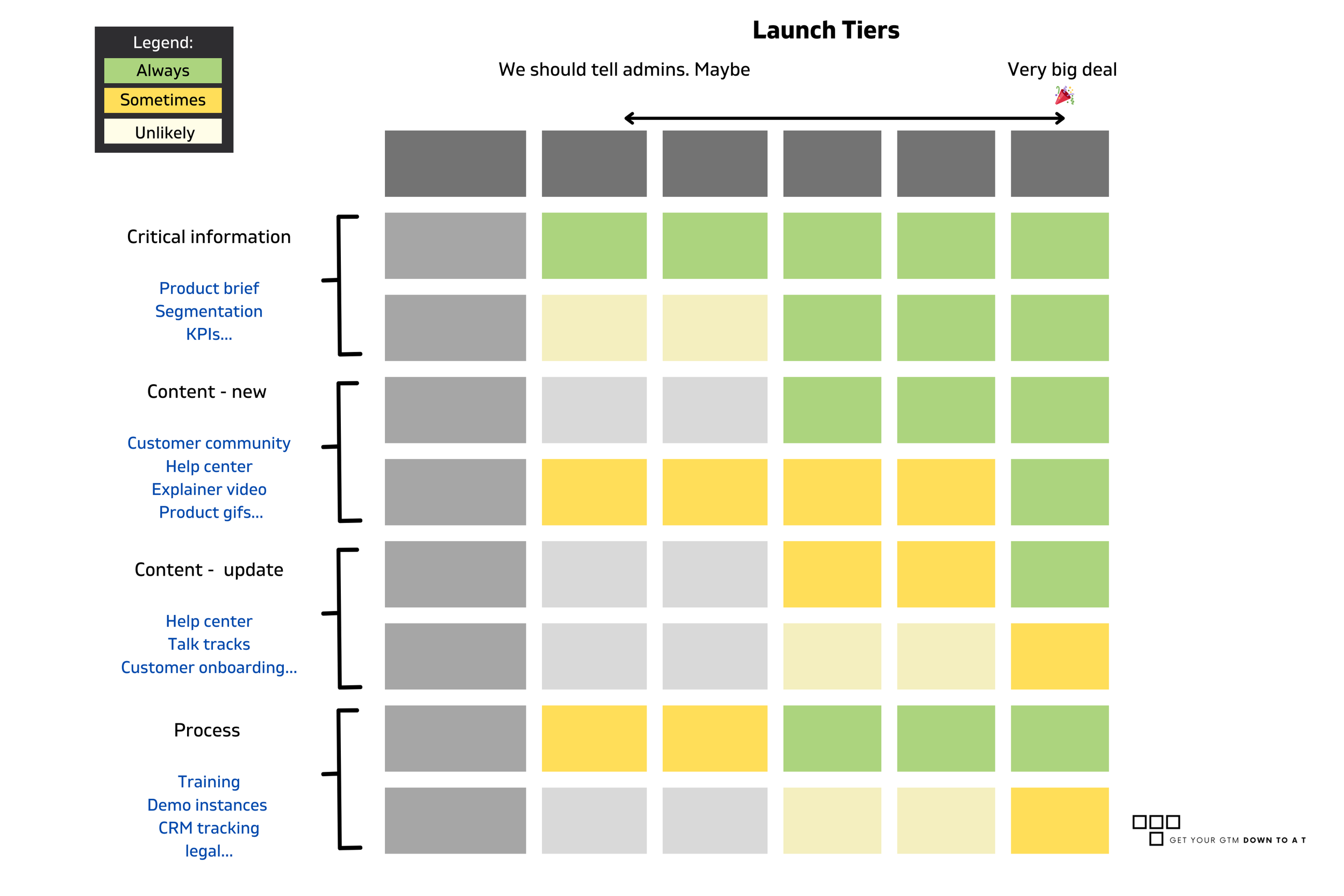product launch
5 things to avoid if you don’t want to scale your product launches
You have been told for years you own product launches.
Product? they just want to get it out the door and move on to the next thing on their backlog.
Engineering? Ha, good one. You ‘don’t speak engineering’ and frankly not sure what they look like.
Sales? What’s even the point they always do what they want anyway.
Customer Support? These are the chatbots right?
You’re a marketer. It is on you to make sure the crowd goes wild whenever you whip up a new landing page or have the social team post something you made in Canva. This is a lot of pressure—so here are 5 simple things you should do if you want to keep the misery train going and lose all your good hair in the next 5 years.
Don’t identify the need
❌ The best things to do if you don’t want to scale your launches is to impose your framework without any consideration of the GTM teams’ needs.
But if you do… Don’t fix it if it ain’t broken. If launches are running smoothly and the teams are aligned you are one lucky product marketer. But if for some reason everyone except the PM seems confused in launch sync meetings… find out why that is.
✅ What are CS, Sales and marketing pains around launches?
Pain = motivation for change
Don’t define x-functional launch categories
❌ The enemy of scale is chaos. So the best way to achieve it is by using categories that don’t make sense to anyone outside of marketing, or not defining launch tiers at all!
But if you are thinking about scale, don’t assume your 2x2 marketing launch tiers makes sense to the rest of the company. It’s often marketing-centric.
✅ Think broader about every customer touchpoint and map categories that make sense across all GTM functions: product, support, sales, ops, finance, and marketing.
This can look like new product (or use case)/new functionality/functionality improvement/minor update.
Each will impact the level of marketing activations, but also customer comms, sales enablement, demo environments, etc.
Don’t spell it out
❌ Assume everyone will figure out the level of preparation and activation that should go into each of the categories you created.
The look on your content person’s face when they realize they need to produce a blog post and 4 short videos 24 hours before launch will be priceless.
✅ But if you don’t want every launch to be accompanied by a 5-day slack blitz, follow these steps:
Make a list of everything that’s already happening + what‘s missing (ideas from step 1 + inspiration)
Assign owners
Assign a category (from the ones you decided on in step 2)
This simple exercise lays out the level of work needed from each team for every launch type.
It organizes your launch partners around their deliverables and allows them to quantify them.
Don’t align with other GTM teams
❌ What useful feedback could they possibly have? Surely this will be straightforward and fun to try for the first time.
But if you don’t want to reiterate the process and explain your role every single launch, it’s a good idea to align all your launch partners around this plan.
✅ Take your categories and checklist on a roadshow.
You missed some things and over-indexed on others. Let your GTM partners have a say, and most importantly
Accept ownership
Define SLAs
101 things go wrong at every launch; no need to add to it. Give everyone comfort in controlling what they can.
Assume the process will translate to flawless execution
You got everyone aligned, great job! If scale isn’t your end goal, this is the perfect time to drop the ball on everything you achieved and count on your counterparts memory when it’s time for the rubber to hit the road.
But if you do want to bring scale into your life, execution is just as important as planning, if not more.
✅ Pick a tool + cadence
Steps 1-4 are useless unless you have a system to execute.
Pick a tool to manage and reflect launch activities.
Better: with your GTM partners
Best: pick one many of you already use.
Asana, Monday, Trello, notion - you can make it work anywhere.
Remember, low barriers = higher adoption.
Decide on a regular meeting cadence where the core GTM team has this tool open.
This is where you:
Kickoff launches by going over the product brief
Get feedback (UX folks love to do show and tell and get CS and Sales input)
Manage ongoing activities: review WIP launches, tackle open questions
Most teams focus on 1-3 or 5.
But you need a reason, a strategy and execution to nail this without feeling overwhelmed or worse—surprised—by your launches.
Curious to see what that looks like? Here’s one example I used in the past 👉

